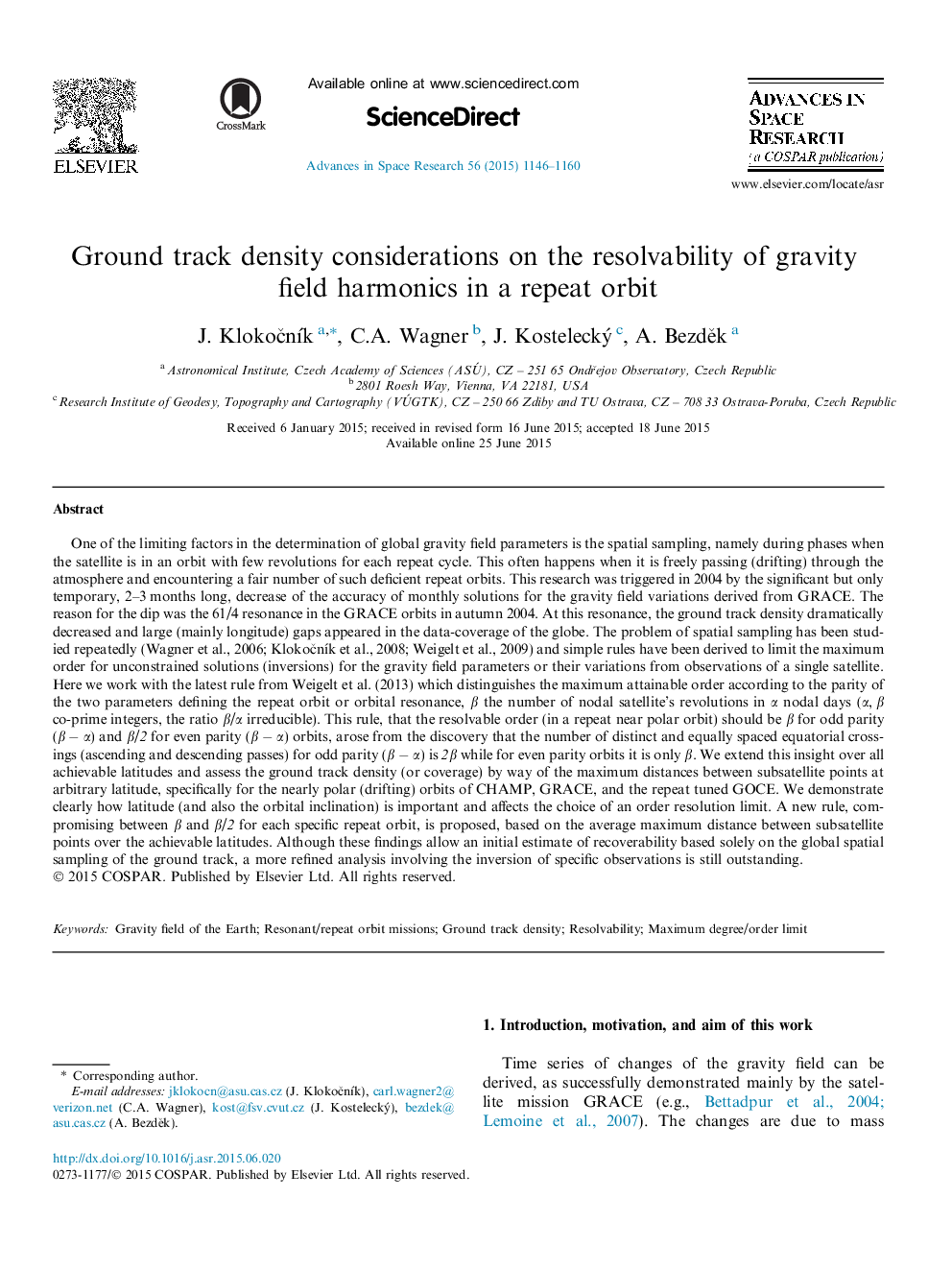| کد مقاله | کد نشریه | سال انتشار | مقاله انگلیسی | نسخه تمام متن |
|---|---|---|---|---|
| 10694209 | 1020015 | 2015 | 15 صفحه PDF | دانلود رایگان |
عنوان انگلیسی مقاله ISI
Ground track density considerations on the resolvability of gravity field harmonics in a repeat orbit
ترجمه فارسی عنوان
ملاحظات تراکم جغرافیایی زمین در حل و فصل هارمونیک میدان گرانشی در یک مدار تکرار
دانلود مقاله + سفارش ترجمه
دانلود مقاله ISI انگلیسی
رایگان برای ایرانیان
کلمات کلیدی
موضوعات مرتبط
مهندسی و علوم پایه
علوم زمین و سیارات
علوم فضا و نجوم
چکیده انگلیسی
One of the limiting factors in the determination of global gravity field parameters is the spatial sampling, namely during phases when the satellite is in an orbit with few revolutions for each repeat cycle. This often happens when it is freely passing (drifting) through the atmosphere and encountering a fair number of such deficient repeat orbits. This research was triggered in 2004 by the significant but only temporary, 2-3 months long, decrease of the accuracy of monthly solutions for the gravity field variations derived from GRACE. The reason for the dip was the 61/4 resonance in the GRACE orbits in autumn 2004. At this resonance, the ground track density dramatically decreased and large (mainly longitude) gaps appeared in the data-coverage of the globe. The problem of spatial sampling has been studied repeatedly (Wagner et al., 2006; KlokoÄnÃk et al., 2008; Weigelt et al., 2009) and simple rules have been derived to limit the maximum order for unconstrained solutions (inversions) for the gravity field parameters or their variations from observations of a single satellite. Here we work with the latest rule from Weigelt et al. (2013) which distinguishes the maximum attainable order according to the parity of the two parameters defining the repeat orbit or orbital resonance, β the number of nodal satellite's revolutions in α nodal days (α, β co-prime integers, the ratio β/α irreducible). This rule, that the resolvable order (in a repeat near polar orbit) should be β for odd parity (β â α) and β/2 for even parity (β â α) orbits, arose from the discovery that the number of distinct and equally spaced equatorial crossings (ascending and descending passes) for odd parity (β â α) is 2β while for even parity orbits it is only β. We extend this insight over all achievable latitudes and assess the ground track density (or coverage) by way of the maximum distances between subsatellite points at arbitrary latitude, specifically for the nearly polar (drifting) orbits of CHAMP, GRACE, and the repeat tuned GOCE. We demonstrate clearly how latitude (and also the orbital inclination) is important and affects the choice of an order resolution limit. A new rule, compromising between β and β/2 for each specific repeat orbit, is proposed, based on the average maximum distance between subsatellite points over the achievable latitudes. Although these findings allow an initial estimate of recoverability based solely on the global spatial sampling of the ground track, a more refined analysis involving the inversion of specific observations is still outstanding.
ناشر
Database: Elsevier - ScienceDirect (ساینس دایرکت)
Journal: Advances in Space Research - Volume 56, Issue 6, 15 September 2015, Pages 1146-1160
Journal: Advances in Space Research - Volume 56, Issue 6, 15 September 2015, Pages 1146-1160
نویسندگان
J. KlokoÄnÃk, C.A. Wagner, J. Kostelecký, A. BezdÄk,
